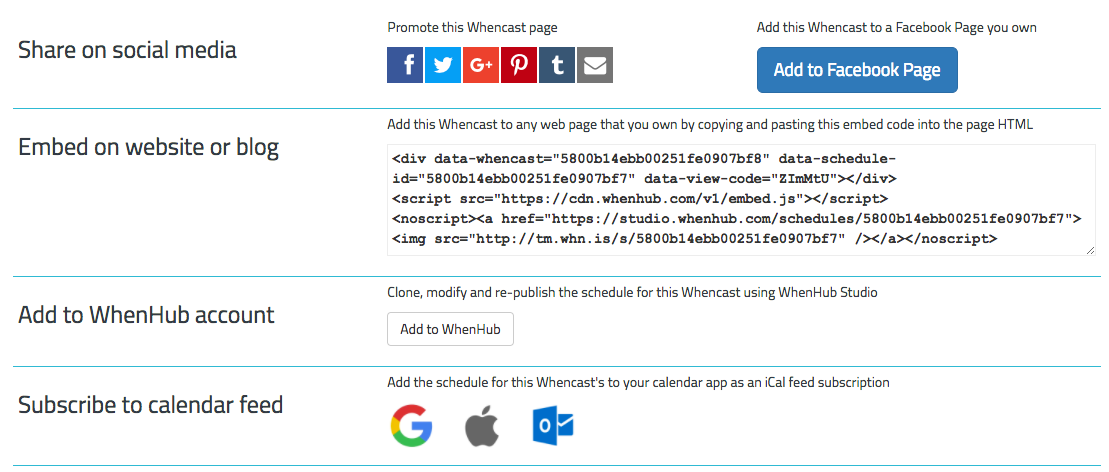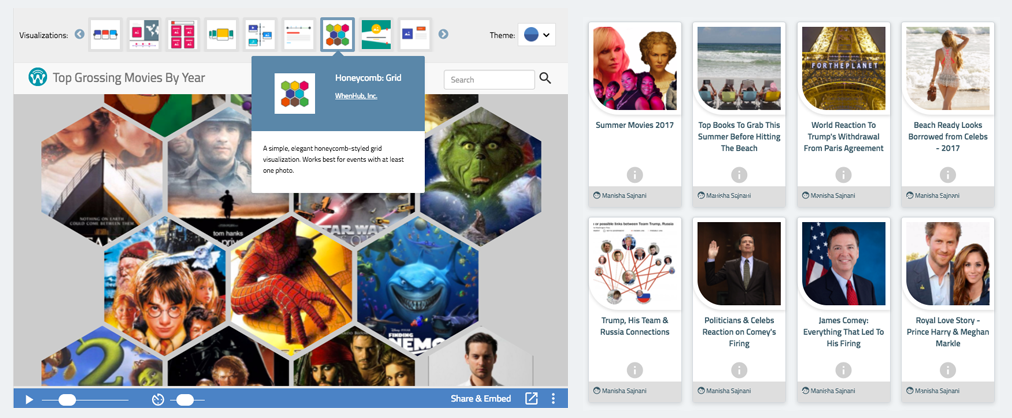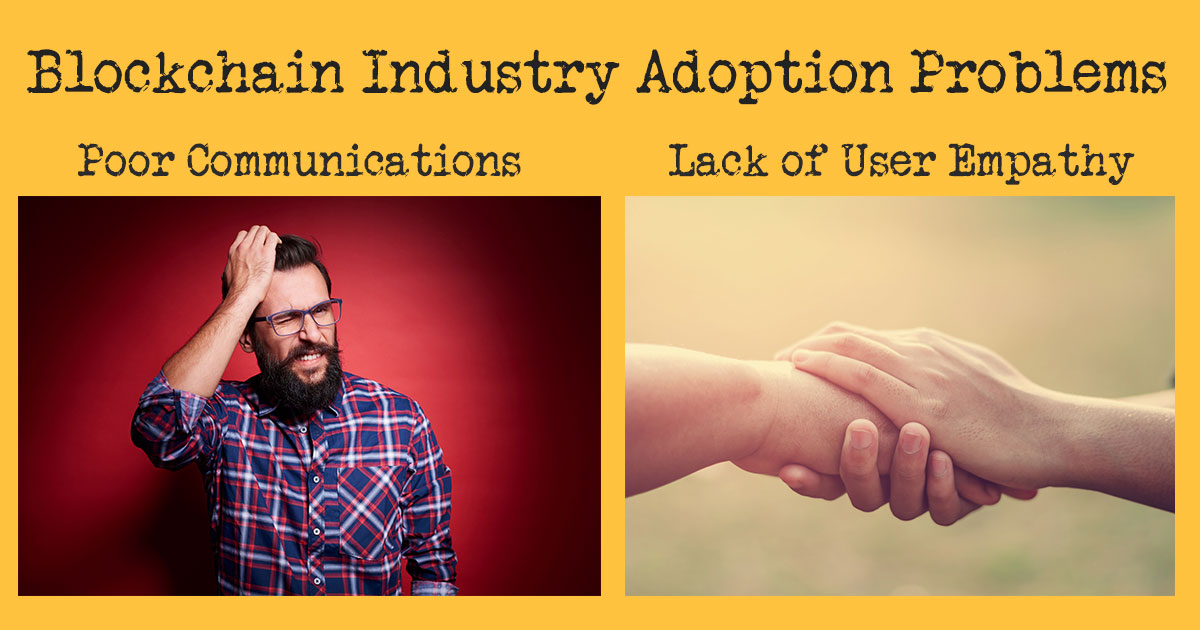Timeline Marketing
Note: This is a repost of my blog post on WhenHub
Timeline Marketing is a form of content marketing that uses time to organize and present interactive content to audiences. As a marketing activity at the top of your sales funnel, Timeline Marketing helps you instantly attract your target audience while creating future engagement and conversion opportunities through calendar integration.
Overview
In general terms, Timeline Marketing has three goals:
- Attract broad but relevant audience of leads
- Educate your audience about your brand and business
- Steer leads to MOFU (Middle of the Funnel)
Chances are that if you are a content marketer, you are already using Timeline Marketing, albeit in a rudimentary way. For instance, your corporate website may have a Company History page with a list of key milestones from your company’s past. If your company hosts events or attends trade conferences, you may have a list of these somewhere on your website (best case), or scattered as individual blog or social media posts. You might even have an embedded Google Calendar which is OK if your website is going for the circa 2005 look and feel.
Today, when you post such time-based content on your website, it is mostly one-way and static – there is no opportunity for user engagement, and the content does not provide any option for user interaction. Not to worry…this is easily solved by web developers and designers who can write code to make this static time-based information interactive, and also add buttons, links and widgets for user engagement. Of course, I am being tongue-in-cheek; interactive web content development does not come cheap, and calling upon a developer any time the content has to be updated is expensive and is also a slow process. If you happen to have invested in a Content Management System, you might find a plugin or widget that can reduce the cost, but the new trade-off will be flexibility as you are constrained by the capabilities of the plugin or widget.
A Better Solution
WhenHub solves these problems and makes it super simple for marketers to curate, organize, and publish any time-based information for high-impact Timeline Marketing. It’s just four easy steps:
Step 1: Create a new Schedule
Step 2: Add Events to the Schedule with text, photos, videos, links, buttons, location etc.
Step 3: Select an interactive timeline visualization
Step 4: Publish your “Whencast” (an embeddable, interactive schedule, much like a YouTube video)
Once you have published your Whencast, you can either link to it, or use the embed code and put it right on your website just like a YouTube video. Below is an example of a Whencast for a Paris vacation plan. It has photos, videos, links and locations, and uses a timeline visualization called “Multiview.”
With your content and a built-in WhenHub visualization, a Whencast is a far superior user experience for time-based content than boring and static lists. Here’s why:
- Create once, publish anywhere
- Update once, see changes everywhere
- Rich media — photos, videos, location, links, documents, tweets
- Embeddable
- Interactive and engaging
- Various visualization styles to fit different use-cases
- Searchable
- Add to Google, Apple, Microsoft and other calendars
- Time-shiftable (more on this below)
- Auto-playable
Future Engagement and Personalization
Publishing a Whencast gets you nice interactive content, which already gives you a marketing advantage over static content. But there’s much more. Built into every Whencast is the ability for your audience to personalize the content, and unique to Timeline Marketing, the ability to create future engagement. In the above Whencast, there are two options on the bottom right: “Share & Embed” and “Time-shift”. These options unlock a wealth of marketing engagement.
Share & Embed
This option provides a user with the ability to promote your Whencast on social media or to embed it on a Facebook Page. It also contains the embed code so anyone can post your Whencast on their website, thus increasing the reach of your content. Users also have the ability to select the “Add to WhenHub” option which enables them to follow your Whencast and stay updated as it changes.
Finally, and this is the best part, if your Whencast is about future events, users can click on the Google, Apple or Microsoft Outlook icons and add the underlying Schedule to their calendar. If you make a change in the Whencast Schedule, users who have subscribed to it with their calendar will see the change – automatically, with no other action required. Using a Whencast, you have the ability to engage your users in their personal calendars, today AND in the future. Let that sink in for a bit. It is an incredible marketing opportunity, and gives you future engagement capabilities that just aren’t possible through other channels.

A quick side note – when we built the WhenHub platform, we always looked to balance form and function. Visualizations provide the form – beautiful, interactive ways to look at time-based data. But it’s the underlying WhenHub engine that delivers on the functional aspects of the platform. It enables time-based content to be seamlessly imported from many sources, synched to Google calendar, and subscribed to via iCal with any modern calendar client. No other platform gives you this level of power and flexibility in such an easy-to-use and seamless manner.
Personalization
Now that we have looked at how easy it is for your time-based content to be made interactive and subscribed from calendar clients, lets take a look at another aspect – personalization. There are many business scenarios where a company’s domain expertise can be encapsulated into time-based content. The above Whencast is a great example – a travel agency, airline or hotel could curate multi-day plans for various cities just like we have done. Indeed, many businesses already do this. With rare exception, the tour plan consists of a static web page or PDF. There is no opportunity for the user to customize the plan or add it to their smartphone calendar.
The Whencast “Time-shift” feature is the solution to this problem. If you have curated a plan schedule of any kind – travel, training regimen, self-learning course, wedding, pregnancy etc. – time-shift makes it easy for your audience to personalize the plan and add it to their calendar. They just pick one of the events, usually the first or last one, and change the date with one that’s relevant for them. The Whencast automatically adjusts the date and time for every event in the schedule while maintaining the relative time interval. For example, for the wedding planner Whencast, a user would change the date of the “Wedding Day” event to correspond with their planned wedding day. This would instantly give them a complete, personalized plan for their wedding which they can add to their desktop or smartphone calendar.

Time-shift is a marketer’s dream feature – it gives you an unprecedented degree of personalization and reach into your audience’s life. Not only that, you can add links to schedule Events so that at a future date, a user sees an Event in their calendar and visits the link for the Event which is for a known activity. Imagine the marketing possibilities afforded to you on the landing page associated with the link. Let your imagination run wild!
Exploring Visualizations and Whencasts
Now that you have a better grasp of the WhenHub platform, there are probably two things that are helpful for you to explore:
Visualizations that are available for time-based content? The Whencast Explorer – an interactive visualization viewer – will answer this question.
Example Whencasts: Our Featured Hub has plenty of great examples.

Next Steps
If you are ready to dive into WhenHub, a great way to get started is to use one of our industry-specific landing pages. Using the landing page, you will get access to the WhenHub Timeline Marketing Guide which contains 50 awesome Timeline Marketing ideas, and also walks you through creating your first Whencast. Click the link below and get started.
> WhenHub Timeline Marketing <


